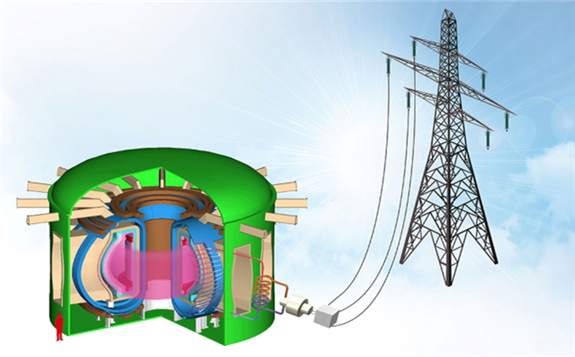
The CAT concept is described in an article published on 19 March in the journal Nuclear Fusion, and was developed from first-of-a-kind reactor simulations. The physics-based approach combines theory developed at the General Atomics (GA)-operated DIII-D facility with computing by Oak Ridge National Laboratory scientists using the Cori supercomputer at the National Energy Research Scientific Computing Center, and is based on development and testing of the underlying physics concepts on DIII-D.
"The key to our approach is to raise the pressure inside the tokamak," the project's lead, Richard Buttery, said. "This makes more fusion occur, allowing us to reduce the current, which in turn makes the plasma easier to sustain and more stable. Our simulations show that by carefully shaping the plasma and moving the current toward its edge, we can suppress turbulent heat losses and support higher pressures at lower currents, to reach a state where the plasma sustains itself. This enables a device that can simply be turned on, generating electricity continuously in a steady state."
Two US bodies - the DOE Fusion Energy Sciences Advisory Committee (FESAC) and the National Academy of Sciences, Engineering and Medicine (NASEM) - have recently released reports calling for action to develop fusion energy in the USA. FESAC's report sets out a decade-long strategic plan to accelerate the development of fusion energy and advance plasma science, while NASEM's report calls for urgent investment by the government and private sector to enable a pilot fusion plant to be operational in the 2035-2040 timeframe.
A key recommendation of both reports is developing the science and engineering basis for a low-capital-cost fusion pilot plant that will lay the groundwork for commercial fusion reactors, GA said. "As a national strategy for fusion energy takes shape in the United States, this new design helps identify the technologies needed, and alleviates critical design challenges," it added.